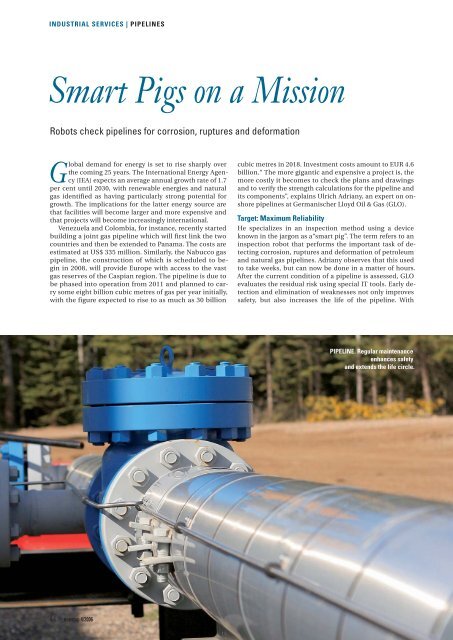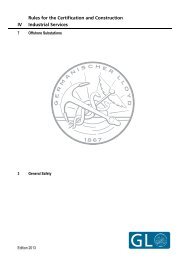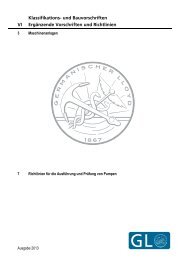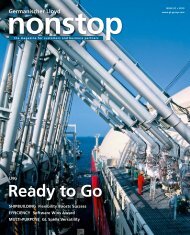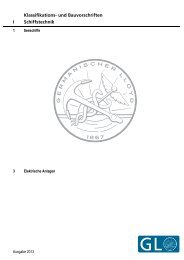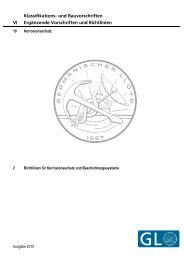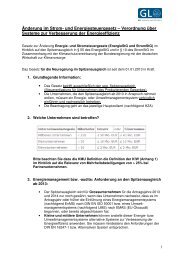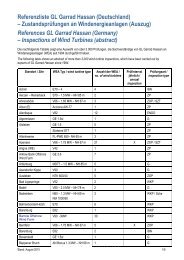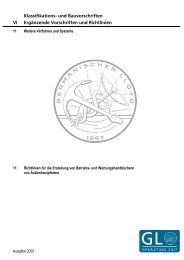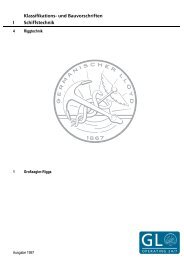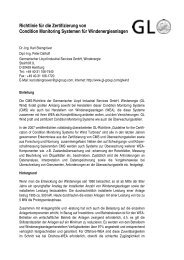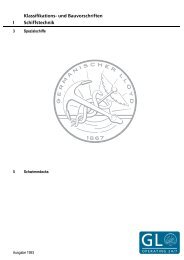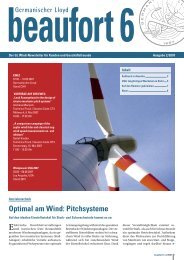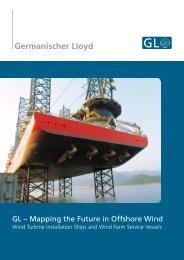Protection of Fuel Tanks Safety ahead! - GL Group
Protection of Fuel Tanks Safety ahead! - GL Group
Protection of Fuel Tanks Safety ahead! - GL Group
You also want an ePaper? Increase the reach of your titles
YUMPU automatically turns print PDFs into web optimized ePapers that Google loves.
INDUSTRIAL SERVICES | PIPELINES<br />
Smart Pigs on a Mission<br />
Robots check pipelines for corrosion, ruptures and deformation<br />
Global demand for energy is set to rise sharply over<br />
the coming 25 years. The International Energy Agency<br />
(IEA) expects an average annual growth rate <strong>of</strong> 1.7<br />
per cent until 2030, with renewable energies and natural<br />
gas identified as having particularly strong potential for<br />
growth. The implications for the latter energy source are<br />
that facilities will become larger and more expensive and<br />
that projects will become increasingly international.<br />
Venezuela and Colombia, for instance, recently started<br />
building a joint gas pipeline which will first link the two<br />
countries and then be extended to Panama. The costs are<br />
estimated at US$ 335 million. Similarly, the Nabucco gas<br />
pipeline, the construction <strong>of</strong> which is scheduled to begin<br />
in 2008, will provide Europe with access to the vast<br />
gas reserves <strong>of</strong> the Caspian region. The pipeline is due to<br />
be phased into operation from 2011 and planned to carry<br />
some eight billion cubic metres <strong>of</strong> gas per year initially,<br />
with the figure expected to rise to as much as 30 billion<br />
44 nonstop 4/2006<br />
cubic metres in 2018. Investment costs amount to EUR 4.6<br />
billion.“ The more gigantic and expensive a project is, the<br />
more costly it becomes to check the plans and drawings<br />
and to verify the strength calculations for the pipeline and<br />
its components”, explains Ulrich Adriany, an expert on onshore<br />
pipelines at Germanischer Lloyd Oil & Gas (<strong>GL</strong>O).<br />
Target: Maximum Reliability<br />
He specializes in an inspection method using a device<br />
known in the jargon as a“smart pig”. The term refers to an<br />
inspection robot that performs the important task <strong>of</strong> detecting<br />
corrosion, ruptures and deformation <strong>of</strong> petroleum<br />
and natural gas pipelines. Adriany observes that this used<br />
to take weeks, but can now be done in a matter<br />
Simulation:<br />
<strong>of</strong> hours.<br />
Das<br />
After the current condition <strong>of</strong> a pipeline<br />
Schiffshebewerk<br />
is assessed, <strong>GL</strong>O<br />
des<br />
Staudamms.<br />
evaluates the residual risk using special IT tools. Early detection<br />
and elimination <strong>of</strong> weaknesses not only improves<br />
safety, but also increases the life <strong>of</strong> the pipeline. With<br />
PIPELINE. Regular maintenance<br />
enhances safety<br />
and extends the life circle.


